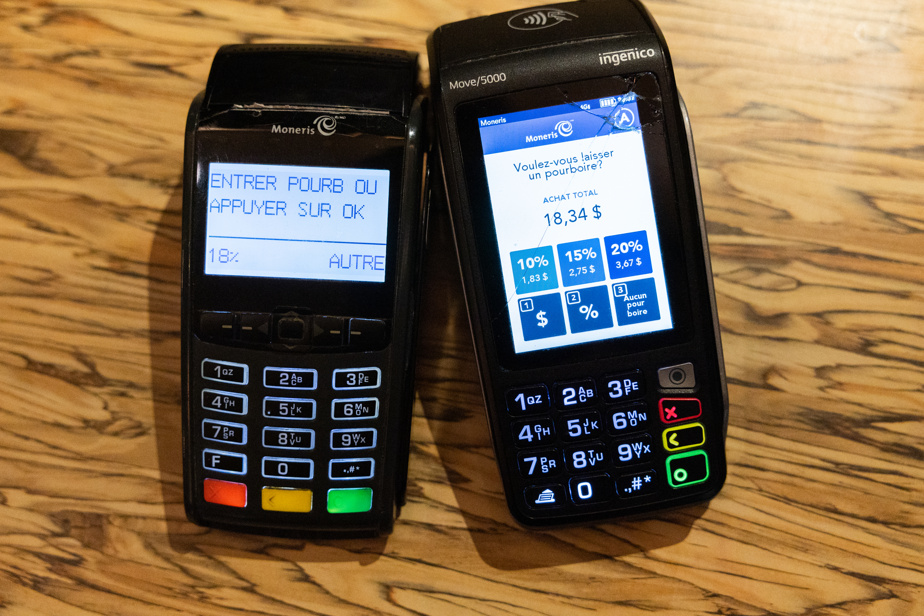If approached by a visitor or newcomer to Canada, Michael von Massow would have difficulty describing our tipping culture.
“It’s a bit like the Wild West,” says von Massow. The food economics professor at the University of Guelph in Ontario studies tipping practices and their impact on consumers.
“If someone came here and asked, ‘Mike, what’s going on with tipping in Canada?’ I’d be hard pressed to give them a definitive answer as to where to tip and where not to tip, and how much to tip.”
It is difficult to know the rules because they are unwritten and change quickly.
Some of us are unaware that a tip is expected until we are handed a payment terminal and asked to choose a percentage of the bill. This technology is increasingly being attributed to “tip inflation”, with displayed choices incentivizing a higher tip, and “tip creep”, meaning that a greater variety of Service providers expect a tip, von Massow says.
This has led to tip fatigue. In an Angus Reid Institute poll last year, 83% of Canadians surveyed felt too many businesses were charging tips. Sixty-two percent of respondents said the instructions on the terminals asked them to tip more.
According to the survey, a majority of Canadians would now prefer higher wages for staff over a tipped model. Interestingly, the preference was almost identical among those who had held tipped jobs in the past.
The meaning of the gesture was lost, those interviewed said. The original intention of rewarding good service has been replaced by the perception that employers use it to compensate for lower wages, according to 73% of Canadians surveyed.
Von Massow agrees: To some extent, the responsibility for providing good compensation has been shifted to the consumer.
As an unwritten social norm, it’s hard to know what to do. You might take your cues from people you know or feed off online discussions. But that’s not always fair to the consumer, says Marc Mentzer, a professor of human resources and organizational behavior at the University of Saskatchewan’s Edwards School of Business.
“There’s a trend on the internet to encourage people to be generous – you know, it’s often restaurant servers who suggest a higher percentage,” says Mentzer.
“I think people who take the ‘I’m sick of this’ stance are unlikely to post on social media. So there is a bias in looking at social media to see what the consensus is. »
For decades, 15 percent was the expected tip at restaurants, Mentzer points out. This etiquette began in the 1960s and remained in effect for about 50 years until payment terminals became more prevalent – and then the COVID-19 pandemic changed that again.
Many people sympathized with the difficulties of the restaurant and service industries during the pandemic and began tipping these workers more generously, Mentzer argues.
“When COVID started, there was speculation that maybe this would make people reconsider how irrational tipping is as a way to compensate employees,” he points out. And there was hope that maybe that would cause some sort of cultural reset. And as we saw, it had the opposite effect. This caused tipping to become more entrenched, extended to new professions, with a higher percentage. »
In practice, tips often do not serve their intended purpose. They fail in two areas, von Massow argues.
When it comes to rewarding good service, it doesn’t show up in how we tip – we tend to be creatures of habit.
“In research, there is very little evidence of a relationship between service quality and tip amount,” says von Massow. Most of us tip within a very narrow window. »
Second, tipping expectations from servers can lead to profiling of customers based on their race, gender, age, or marital status. If an employee thinks you might not be the type of customer to tip well, they might not provide the same level of service, von Massow says.
“People of color, women, especially younger women, families are all getting worse service,” he says. A middle-aged white guy like me, especially if I’m wearing a suit, will receive excellent service whether I’m a good tipper or not. »
Even deciding not to order alcohol can change a server’s perception of you, von Massow argues.
Ordering alcohol increases the bill, he points out, and so the percentage tip also increases significantly in value.
There are also pitfalls for servers.
Some must tolerate bad behavior and harassment in order not to lose tips, a key source of income, Mr. Mentzer points out. And some restaurant managers may play favorites among staff, assigning them the best shifts and most tables, von Massow says. Two employees in the same job can have very different incomes.
Ultimately, consumers should take control and tip where they feel comfortable doing so, MM says. Mentzer and von Massow. Budgets are now tighter for many Canadians facing an increasing cost of living.
“Tipping is not a law, it’s a social norm; you are completely in control,” von Massow maintains.
“We have to overcome our guilt and say, ‘If I have a good experience, I’m going to tip and I’m going to decide for myself what’s reasonable.’ And if you go to a restaurant and their directions say 25, 30, and 35 percent off, and you think that doesn’t make sense, take a few seconds to choose another option and tip them whatever you think is reasonable . »




